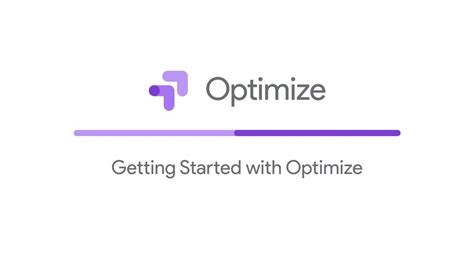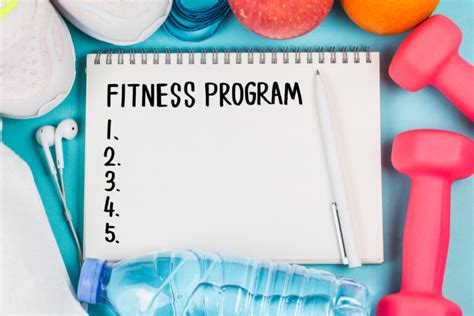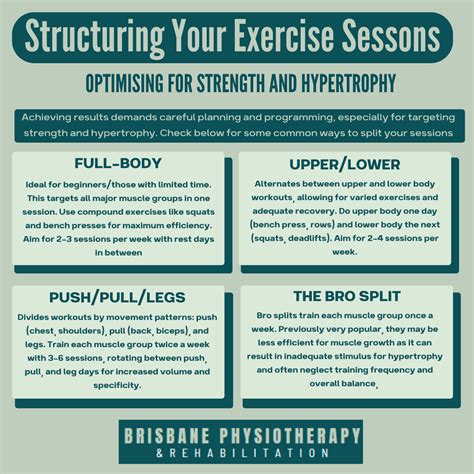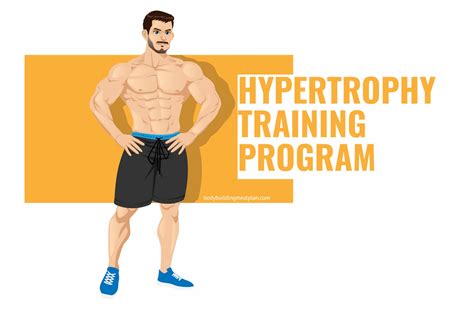Optimize gym efficiency: best workout split for peak strength & hypertrophy?

An effective workout split is crucial for gym efficiency and reaching peak strength and hypertrophy. It dictates how often you train specific muscle groups, managing volume and recovery, and ultimately defines your progress.
Understanding Workout Splits: The Foundation of Progress
Choosing the right workout split isn’t just about what feels good; it’s a strategic decision that directly impacts your progress in the gym. A well-designed split ensures adequate training frequency for each muscle group, allows for sufficient recovery, and optimizes the total volume you can handle without overtraining. For those aiming for both peak strength and significant muscle hypertrophy, balancing these elements is paramount.
The goal is to stimulate muscle growth and strength adaptation consistently, without burning out or under-recovering. Different splits achieve this in various ways, each with its own benefits and drawbacks depending on your goals, schedule, and experience level.

Popular Workout Splits for Strength & Hypertrophy
Let’s delve into some of the most common and effective workout splits, evaluating their suitability for maximizing both strength and muscle growth.
Full Body Split
Typically involving 2-3 sessions per week, this split trains all major muscle groups in each workout.
- Pros: High frequency per muscle group, excellent for beginners, great for strength development, allows for high weekly volume without excessive per-session volume.
- Cons: Can be taxing if volume per session is too high, may limit the number of exercises per muscle group.
- Best for: Beginners, those with limited training days, strength focus with good hypertrophy.
Upper/Lower Split
This split divides the body into upper body and lower body workouts, often done 4 days a week (e.g., Upper, Lower, Rest, Upper, Lower, Rest, Rest).
- Pros: Allows for higher volume per muscle group per session compared to full body, good frequency (twice a week per group), versatile for both strength and hypertrophy.
- Cons: Can be demanding, requires consistent 4-day commitment.
- Best for: Intermediates, good balance of strength and hypertrophy, manageable frequency.

Push/Pull/Legs (PPL) Split
A popular choice, usually performed 3 or 6 days a week (e.g., Push, Pull, Legs, Rest, Push, Pull, Legs). Push workouts target chest, shoulders, triceps; Pull workouts target back, biceps; Legs target quads, hamstrings, glutes, calves.
- Pros: High frequency (if 6x/week), excellent for hypertrophy due to high weekly volume potential, logical grouping of muscle functions.
- Cons: 6x/week can be demanding on recovery and time, 3x/week has lower frequency per muscle group than full body/upper-lower.
- Best for: Intermediates to advanced, primary focus on hypertrophy, good for progressive overload.
Bro Split (Body Part Split)
This split dedicates an entire session to one or two muscle groups (e.g., Chest day, Back day, Leg day, Shoulder day, Arm day).
- Pros: Allows for very high volume per muscle group in a single session, good for specific muscle focus.
- Cons: Low frequency per muscle group (typically once a week), often suboptimal for strength gains and overall hypertrophy compared to higher frequency splits. Modern research generally favors higher frequency.
- Best for: Advanced bodybuilders focusing on specific muscle “pump” or isolation, but often less efficient for general strength/hypertrophy goals.

Key Factors in Choosing Your Ideal Split
The “best” split is highly individual. Consider these factors when making your choice:
- Training Frequency: How many times per week can you train each muscle group? Higher frequency (2-3x/week) is generally better for both strength and hypertrophy.
- Volume: Can you achieve sufficient total weekly volume for each muscle group without overtraining?
- Recovery: Is your body recovering adequately between sessions? Sleep, nutrition, and stress management are key.
- Time Commitment: How many days a week can you realistically commit to the gym, and for how long each session?
- Experience Level: Beginners typically benefit more from full-body routines, while advanced lifters might benefit from more specialized splits like PPL or Upper/Lower.

The Verdict: Which Split Reigns Supreme?
While there’s no single “best” split for everyone, certain patterns emerge for optimizing gym efficiency for peak strength and hypertrophy:
- For Beginners/Limited Time (2-3 days/week): A Full Body Split is highly effective. It allows for high frequency and excellent skill acquisition, building a strong foundation.
- For Intermediates (3-4 days/week): An Upper/Lower Split or a 3-day PPL offers a fantastic balance of frequency, volume, and recovery. These are arguably the most versatile for general strength and hypertrophy goals.
- For Advanced Lifters/High Volume Goals (5-6 days/week): A 6-day PPL split can be extremely potent for hypertrophy, provided recovery is meticulously managed. A 4-day Upper/Lower can also be advanced by increasing volume or intensity.
The key is consistency and progressive overload within your chosen framework. Don’t constantly switch splits; stick with one for several months, track your progress, and adjust as needed.

Conclusion
Optimizing your gym efficiency for peak strength and hypertrophy isn’t about finding a magical split, but rather finding the right one for you that allows for consistent, high-quality training with adequate recovery. Prioritize splits that offer a good balance of frequency and volume, and always listen to your body. Experiment, track, and adapt to unlock your full potential.







